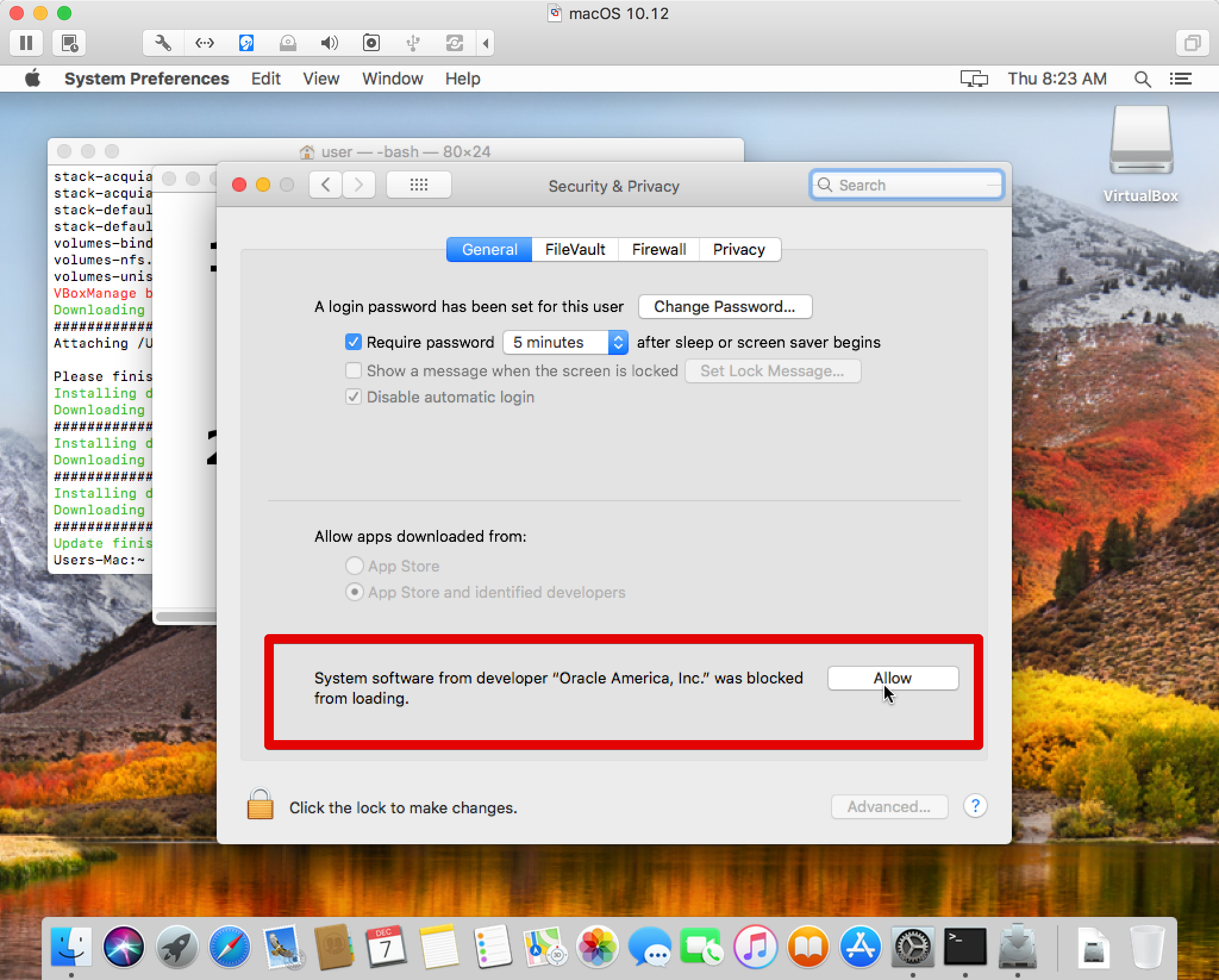Use geerlingguy’s script to prepare a sierra iso file. Git clone cd macos-virtualbox-vm chmod +x prepare-iso.sh./prepare-iso.sh /Applications/Install macOS Sierra.app /Users/suzy/sierra.iso. MacOS: Virtualbox & VMware Supported Provisioners. Virtualbox; A licensed copy of VMware Fusion The VMWare Desktop Vagrant plugin is $79 and is required to use Vagrant with VMware. If you can’t find an answer to your question, please open an issue on the DetectionLab GitHub! Place the file in the directory scripts/EFI. If you don't already have the file you can extract it from the MacOS Mojave installer. The macos-on-virtualbox.sh, scripts/make-Catalina-Installer.sh, and scripts/make-Catalina-Boot.sh scripts each contain settings that should be reviewed before running.
Virtualbox Mac Os Install
Important: I'm writing this when the last version of macOS (and the one I have installed) is Mojave.There is already a script which installs Mojave in a virtual machine here https://github.com/img2tab/okiomov. Apkpure dragon ball z. But if you are curios how to do everything manually to install High Sierra, then this guide may be useful.


After reading a few articles I ended up with these steps:
Macos Vm On Macos
- On macOS, download the High Sierra installer (even if you have Mojave installed):https://itunes.apple.com/us/app/macos-high-sierra/id1246284741?ls=1&mt=12
- If the High Sierra Installer starts, quit it.
- Open 'Disk Utility'.
- Click on 'File' > 'New Image' > 'Blank image..'. Or just press cmd+N.
- In the 'Size' field, enter
13 GBand save it wherever you want. - If the image is not mounted automatically, double-click the file you just created to do it.
- Open 'Terminal'
- Run
sudo /Applications/Install macOS High Sierra.app/Contents/Resources/createinstallmedia --volume /Volumes/Untitled. If you changed the value of the 'Name' field in the step where you changed the 'Size', then instead of 'Untitled' the image probably appears with that name you entered. - Once the previous command finished, continue with the following steps.
- Copy the file to some device which you can get access from Ubuntu (external drive or whatever works for you).
- On Ubuntu, open the 'Terminal'.
- Run
VBoxManage convertfromraw <path_to_input_.dmg_file> <path_to_output_.vdi_file>. - Open 'VirtualBox'.
- Create a new machine of Type 'Mac OS X' and Version 'macOS 10.13 High Sierra (64-bit)' (probably others work, but I just tried with that one).
- Once the machine is created, go to the 'Settings'.
- Select 'Storage' and click to add a hard disk. When asked click on 'Choose existing disk' and select the .vdi file you created using
VBoxManage convertfromraw. - Click 'OK' and start the machine.
- Wait until you get to the screen where you have to choose the language. And choose your language.
- 'macOS Utilities' appears. Select 'Disk Utility' and click 'Continue'.
- Select the disk where you are going to install macOS (probably the same you created when creating the machine).
- Click 'Erase'.
- Verify that 'Mac OS Extended (Journaled)' is the format selected and click 'Erase'.
- Once it finishes, Quit the 'Disk Utility'.
- Select 'Install macOS' and click 'Continue'.
- Follow the instructions.
- Once it finishes, the machine automatically rebooted. What you have to do is power it off.
- Remove the installer hard disk from the machine. The one you added previously, not the one where you are installing macOS.
- Start the machine.
- You are going to see a screen where the last line is
Shell> - Run
cd 'macOS Install DataLocked FilesBoot Files' - Run
boot.efi - Continue the installation normally.
Virtualbox Mac Os Github Free
Silicon integrated driver download. Carbon 14 atomic number. References:
